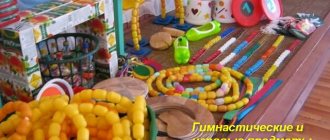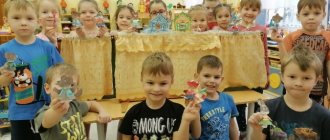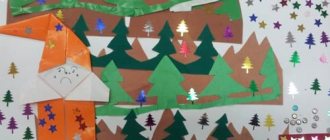Student projects (archive)
The pedagogical feasibility of this project lies in the fact that it is aimed at organizing meaningful leisure time for students, satisfying their needs for active forms of cognitive activity, as well as expanding their social circle, opportunities for full self-expression and self-realization in sports activities. This is the relevance of the project.
- The goals of the project are: development and improvement of the sports and leisure life of university students.
- The objectives of the project are:
- — popularization of a healthy lifestyle and mass sports among ISUE students;
- — creating and improving conditions aimed at including university students in active physical culture and sports activities, forming departmental teams in Olympic sports, as well as a university team in mass sports;
- — selection of students to represent their faculties, dormitories at the Spartakiad of freshmen, Spartakiad of faculties, Spartakiad of dormitories, the Intra-university stage of the ACCC of Russia Championship at ISUE, as well as holding these and other events within ISUE.
- Description of the project.
- The project involves planning and implementing the activities of SSC ISEU for 2022.
- The description of the structure and activities of the SSC is set out in detail in the regulations on the association “ISUE Student Sports Club”.
- The club’s management decided on the need to hold at least 3 major events every year:
1. Health Day at ISEU 2022.
Holding a sports festival with the participation of ISUE students. Creation of training grounds for crossfit, chess, aerobics, dancing, basketball, volleyball, table tennis, badminton, fitness, cheerleading.
- 2. Spartakiad of ISUE freshmen;
- Competitions among first-year students of the faculties of TEF, EMF/IVTF, IFF/FEU and EEF in football, volleyball, basketball, shooting, crossfit, cross-country, chess.
- The winners are awarded cups, medals and prizes.
- To be awarded, you need 102 medals and 7 cups, as well as valuable prizes.
- 3. Intra-university stage of the ASSC Russian Championship at ISUE
- Competitions among students of all faculties with mixed teams of TEF, EMF/IVTF, IFF/FEU and EEF in mini-football, volleyball, basketball 3x3, table tennis, chess.
- The winners are awarded cups, medals and prizes.
- To be awarded, you need 111 medals and 9 cups, as well as valuable prizes.
- Advantages and innovation.
The project will help popularize a healthy lifestyle among students in the Ivanovo region and attract applicants involved in mass sports and with sports ranks in various sports.
Students will feel involved in organizing major tournaments, schools and seminars on the territory of ISEU.
The innovativeness of the project lies mainly in the degree of accessibility of the student association, independent planning of its activities and determination of prospects for further development.
- Implementation experience.
- · cooperation with local governments and Federations
- · experience working in a team;
- · experience in organizing the Intra-university stage of the ACCC of Russia Championship at ISUE (season 2016-2017)
The project team will organize at least 3 major events, which will be held during the 2022 calendar year and will become annual events held by the ISPU SSC. It is planned to involve a total of at least 200 people in the organized events, and the number of participants should increase every year.
Source: https://student.ispu.ru/book/export/html/7218
Event plan
The teacher organizes an exhibition for children on the topic “Work in our garden.” Information material is selected for it: postcards, newspaper clippings, educational games, fiction.
A medical worker is preparing a lecture on the benefits of onions for a parent meeting. The teacher chooses message topics with the children on which they will draw up creative works.
After the completion of the project, the results of the activities are summed up, a newspaper is issued, and delicious onion dishes are presented.
The music worker organizes accompaniment for the award ceremony for the best chefs.
Documents required for project implementation
Before implementing the project, the teacher must complete the following steps:
- Create a project goal.
- Develop a plan to achieve the goal.
- Involve specialists in the implementation of relevant sections of the project.
- Draw up a project plan.
- Collect the necessary material.
- Include different types of activities in the lesson design.
- Prepare homework to complete independently.
- Present the project in kindergarten using an open lesson.
When implementing a project in a preschool educational institution, it goes through the following stages:
- Goal setting. The teacher helps the child choose a task that is feasible and relevant for him, taking into account his age, abilities and interests.
- Project development is an activity plan to achieve a goal.
- Executing the project is the practical part.
- Summing up - identifying tasks for new projects.
Application of projects in practice
It is clear that in primary school children do not yet have the skills to independently search for the necessary information. Therefore, to begin with, a game form is suitable for them: simple observation of animals, plants, weather. As children grow older, their project tasks should gradually become more complex. The motivation will be practical experience from real life, namely the opportunity to earn money.
A certain idea is taken as a basis. For example, installing a terminal for charging gadgets on the station area. In this case, it’s not enough to want, you first need to think through everything, and then do it:
- Find out everything about the ways of implementation from the point of view of the law;
- Register as an individual entrepreneur (ask your parents);
- Estimate your chances of success, see what problems may arise and how to deal with them;
- Find a suitable location, as well as a responsible person with whom you need to coordinate the installation, etc.
It is clear that a ninth-grader cannot become an entrepreneur right away. But he will form a specific idea, confirmed by practice, of how he can launch his startup.
In theory, everything sounds attractive, of course, but in reality, teachers face certain difficulties:
- Where should the project start?
- How to motivate students;
- How should this approach be incorporated into the school curriculum without compromising the core base.
Benefits to help
The textbook “Design Workshop”, developed by practitioners A.V., deserves special attention. Leontovich, I.A. Smirnov, A.S. Savvichev. In lively and understandable language, the authors tell teachers and children about the intricacies of design and research activities:
- How to bring a project idea to a successful result;
- How to structure your work;
- Errors and ways to solve them are analyzed using examples;
- Advice is given on how to independently prepare for the delivery of the project.
Computer presentation vs stand for project work
The presentation of the project should be not only informative, but also interesting. Along with the computer presentation, which is common in every school, there is a poster demonstration. When the board displays the main points of the study in the form of diagrams, drawings or tables. Such a presentation should not be overloaded with data. She acts only as an assistant to the speaker and the audience.
Are there any significant differences between a computer show and a stand show? No, they are essentially the same thing. It’s just that in the presentation the slides go one after another, and on the stand blocks of information appear sequentially:
- Full name of the author and supervisor;
- Relevance of the presented topic;
- The purpose of the project and criteria for the effectiveness of the project (in the study we talk about confirming the hypothesis);
- Project concept (flowchart of work execution, demonstration of the essence of the research process and its objects: these can be area maps, diagrams, photos of samples and teams);
- Resources used.
If desired, the structure can include a list of references, an evaluation of effectiveness and acknowledgments, if any.
What does a school project include?
The final product here can be anything: from a wall newspaper to a model of Ancient Rus'. After all, the main thing is to create something completely new for the student, previously unknown to him.
Solving design problems, one way or another, is included in the plan of every lesson in any discipline. The development of large-scale presentations and the practice of defending them are carried out mainly in extracurricular activities.
Ideally, the principle of this approach to training is based on 3 advantages:
- Self-determination
(while working on a project, the student identifies for himself those areas of knowledge that resonate with him the most); - Self-discipline
(through trial and error, the child learns to independently organize his free and working time);
- Self-realization
(having chosen the most interesting direction for himself, the student begins to use his potential as effectively as possible).
In addition, debates during the defense of a project are an extremely useful and exciting process. Even if a child is not destined to become a speaker or scientist, he will still have to present himself both at work and in society.
How it is implemented
Project activities in kindergartens are considered outside the traditional class schedule. Every project requires careful planning and attention to detail. Project activities in kindergarten according to the Federal State Educational Standard are based on the following theoretical principles:
- the focus is on the child;
- children's individual work pace is maintained, so everyone can achieve success;
- basic knowledge is learned more easily because of its versatility.
Why is project activity in children? is the garden always relevant? Because every baby has its own obvious and hidden characteristics, and at every age there are sensitive periods. This direction allows us to take all this into account and create the necessary conditions for the maximum realization of children's potential.
Digital solutions
Several online resources will be of great help to teachers: the School Projects Laboratory being developed by Enlightenment (will be available in the fall of 2021) and Proobskills.
Work in the School Projects Laboratory includes 3 stages:
- The simplest level: a novice designer needs to fill in the empty fields of the template with a theme and bring the work to its logical conclusion;
- The second stage is a little more difficult. Here the child will have to adjust the structure of the project or research himself;
- The third level, where the student creates his own project independently, and the teacher acts as a curator.
The uniqueness of “Proobskills” lies in the provision of checklists to all participants. This methodical and meticulous approach has undeniable advantages:
- The relevance of the research will be justified at the initial stage of work;
- A clear and understandable formulation of the technical specifications, which will simplify the process of its implementation;
- Selection of required literature. During preparation, the child will learn to independently cut off unreliable sources of information;
- Tracking all the nuances of the research process. Using the designer’s checklist, the teacher will see how the work is progressing, what mistakes have been made, where the knowledge base or perseverance was lacking;
- A step-by-step analysis of the progress of work, its adjustment and final protection will enhance the quality of the result obtained.





